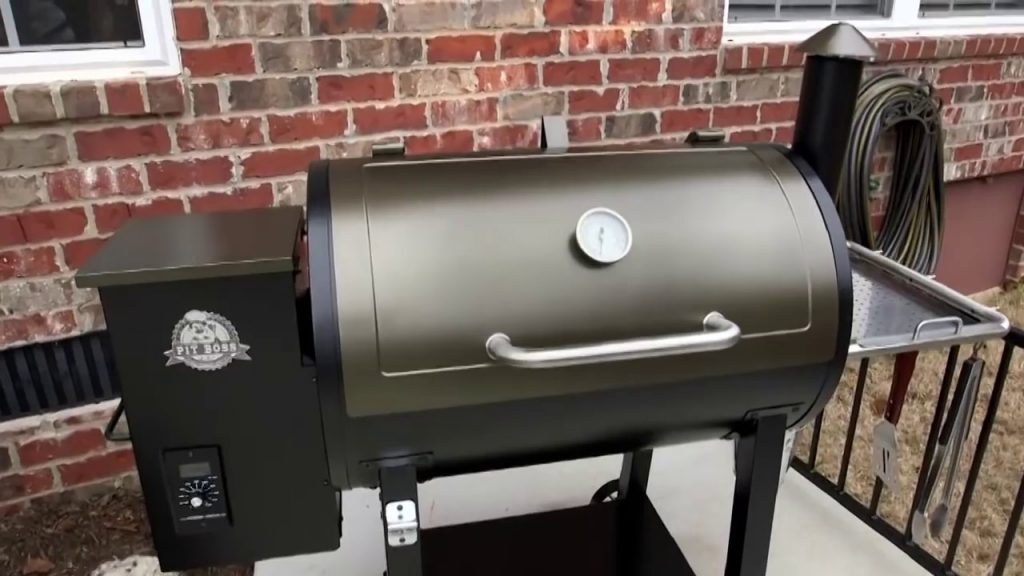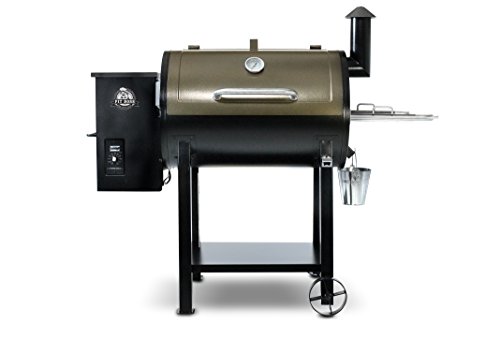As grilling season gears into full swing, you might be wondering what kind of grill you’ll need for your cooking endeavors this year. If so, don't worry. These Pit Boss 820 reviews will help you out.
We’ve collected together information to help you understand which kind of grill or smoker you might need, and the types of wood to use for the food you’re cooking. We’ve also pulled together a review based on real-life users of the Pit Boss 820.
What Types of Grills Are There?
Knowing the types of grills available can help you determine the type of grill that will most effectively meet your needs.
Propane or Gas Grills
- Your purchase includes One Weber Spirit II E-210 2-Burner Liquid Propane Grill in Black color
- Grill dimensions: Lid Open - 57"H x 48"W x 26"D. Lid Closed - 44.5"H x 48"W x 27"D. Each cooking grate is 10.16” x...
- Propane gas grill works with Standard 20 lb LP tank.
One of the easiest types of grills to use and clean is a propane or natural gas grill—which is great for when you're in a hurry.
Gas grills often have smoker boxes, but smoky flavor isn’t a strong feature.
Charcoal Grills
- CHARCOAL GRILL - Barrel style BBQ Grill with heavy duty steel construction and powder coating finish, the perfect...
- LARGE COOKING AREA - 250 square inch total cooking area delivers exceptional taste and charcoal flavor
- BARBECUE GRILL FEATURES - Thick Cast Iron Cooking Grates, Bottom Storage Rack, Heavy-Duty Steel Construction, Side Air...
The classic grilled flavor that most of us grew up with comes from a charcoal grill and its flame broiler. Many hard-core cooks and meat smokers won’t use anything but a charcoal unit. They love the smoky flavors and deep sear marks given from it versus any other grill.
Smaller, portable charcoal models usually don’t cost as much; however, they are perfect for camping, picnics, and other outings.
Electric Grills
On the other hand, electric grills are one of the easiest to use because they don’t involve flames and has a digital control. They’re great for people who have strict housing rules. Patios or porches and decks attached to buildings often do not permit charcoal, gas, or pellet grills, but electric grills are acceptable.
Electric grills may also come in both indoor and outdoor options. Plus, they are usually stainless steel or porcelain coated, which gives them a pristine look.
The main disadvantage of an electric grill is that they really don’t offer a smoky flavor— unless you purchase one that’s specifically uses wood chunks.
Pellet Grills
Pellet grills or pellet smokers are great and offer lots of versatility. They combine the elements of a charcoal smoker, kitchen oven, and gas grill.
Pellet smokers or grills are only appropriate for open air, outdoor spaces. However, each brand will vary, but pellet grills function in a variety of ways:
Like charcoal grills, pellet units offer some of the best flavors to your food. But, you’ll have to choose the right wood chips for the right taste, though.
Pellet grills quickly smoke food and automatically feed the pellets for you. Therefore, meaning you don’t have to pay as close attention while grilling.
Also, pellet models feature electronic controls which help you regulate the unit’s airflow, and maintain and regulate cooking temperatures.
The fuel for pellet grills comes from a variety of wood sources, all of which give distinctive flavors to your meat and veggies. For specific suggestions on what kind of to use, see the list below.
Pellets give a cleaner burn than charcoal, which makes some people feel safer using them for cooking. On the other hand, you must use food-grade pellets, or you could risk health problems from ingesting toxic smoke.
What is Smoking Meat?
Smoking meat is a process of flavoring and preserving meat by allowing it to be exposed to smoke. This technique dates back to prehistoric times and has been used throughout history for preserving food.
There are four basic meat smoking methods used.
Hot Smoking
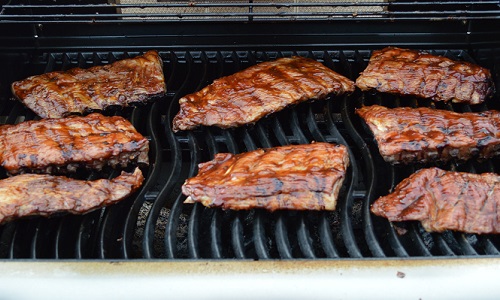
Hot smoking is the most common process. When most people think of smoking meat, this is the process that comes to mind.
The hot smoking procedure includes an enclosed environment, such as a smokehouse or oven. When the food is placed in the smokers, the temperatures range from 126 to 176 degrees Fahrenheit.
Warm Smoking

Warm smoking is a process similar to that of hot smoking, except it takes place at a lower temperature. The temperatures are set between 77 to 104 degrees Fahrenheit, and it takes longer than hot smoking.
Cold Smoking
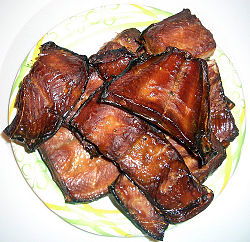
Cold smoking is the technique of preserving meat in which the meat remains raw throughout the process. Because the process does not cook the meat, it is cured beforehand.
By utilizing temperatures between 68 degrees to 86 degrees Fahrenheit, the food is smoked to help give it a rich taste. Some of the different types of meat that are used in this process include salmon, scallops, steak, and beef.
After the cold smoking process, you can grill, steam, bake, or roast your food before consumption.
Liquid Smoking
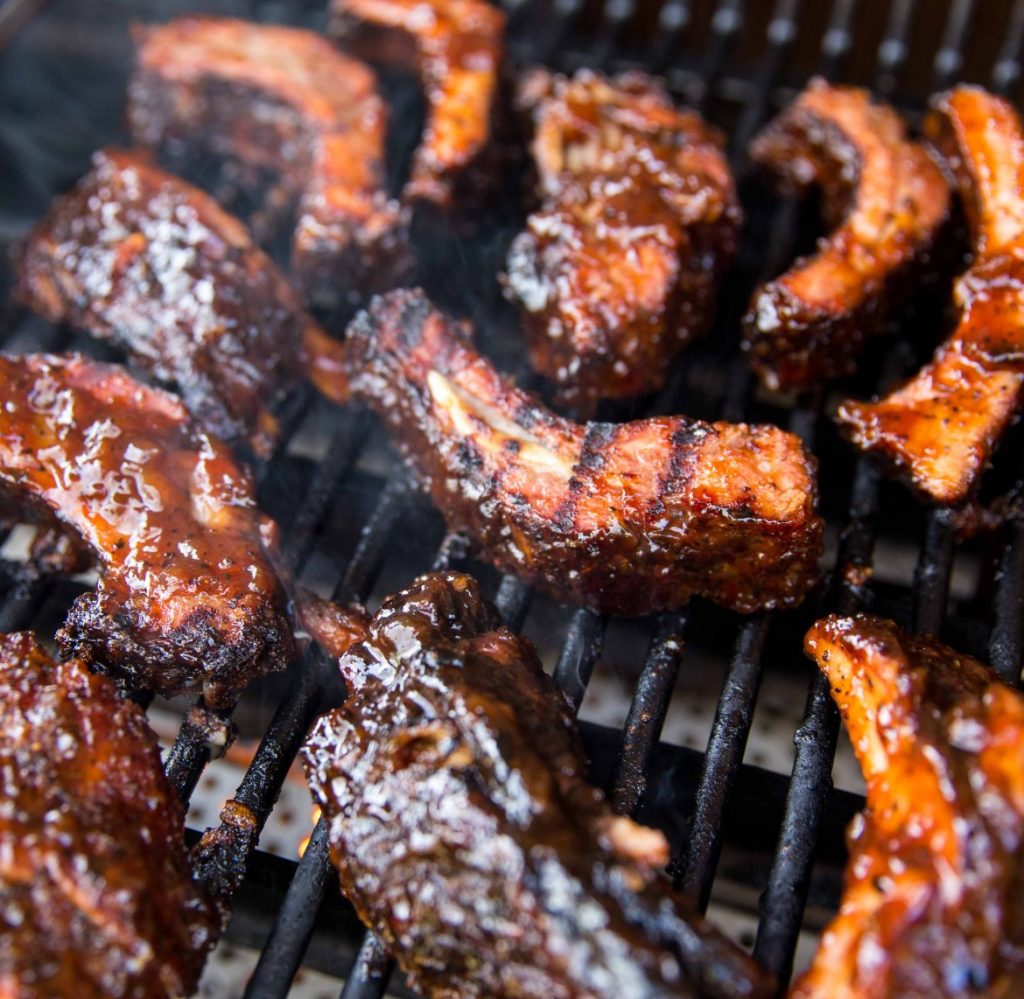
Liquid smoking is dipping or spraying liquid to meat to replicate the taste of smoked meat flavor.
The liquid smoke product is often added to things like barbecue sauce to add that rich, smoky taste.
A Brief History of Pellet Grills
Pellet grills were created a few decades after the advent of pellet heaters in the early 1930s. Pellet heaters became useful in the 1970s, during the shortage of oil during the crisis.
A decade after the crisis, Joe Traeger—the owner of a family-based heating business— started exploring the possibilities of using pellets for grills. In 1985, he produced his first unit and received his patent for the grill one year later.
Before You Begin Grilling and Smoking
One of the most important aspects of successfully cooking and smoking delicious food is selecting the right wood pellets.
It can get confusing, so we’ve pulled together the best types of wood to choose.
Wood Types for Cooking and Smoking Pork
Woods Types for Cooking and Smoking Beef
Wood Types for Cooking and Smoking Cheese
Wood Types for Cooking and Smoking Fish
How to Cook and Smoke with Wood Pellets
1. Get Your Pellets and Hopper Ready
After you’ve gotten your pellet grill set up and seasoned, you’re ready to go.
You’ll need to open the pellet hopper, which are on the back or the side of the grill.
Don’t forget to close the hopper lid.
2. Ready Your Grill and Turn it On
Just like with other types of grills, you have a little bit of preparation work. Thankfully, pellet grills are easy to understand because they have electronic control panels.
Find the cooking mode and turn it to “Cook.”
Next, you’ll need to set the control to “Ignite,” and the press the “Start” button.
3. Make Adjustments According to the Plans
Once you see smoke coming out, close the lid.
Wait for the smoke to clear and look for the flame in the burn pot. Once you see that, your grill is ready for use.
4. Preheat Your Grill
Now that your grill is ready, you’ll need to pre-heat it according to the food you’re planning to cook. Turn the control to the “Pre-heat” mode, and let it run for about 10 to 15 minutes.
5. Use Your Recipes and Plans
Your recipes or plans will give specific instructions for the temperatures you’re going to need to set your unit for preparing your food. A basic guideline is:
- 500-550 degrees Fahrenheit for lamb chops, steak, and hamburgers.
- 350 degrees Fahrenheit is standard for cooking ham, pork, and chicken.
- 310 degrees Fahrenheit is perfect for cooking turkey or doing slow cooking for ribs.
You’ll need to flip veggies and meats throughout the process of cooking, so make you sure you keep an eye on the clock to help avoid burning one side or the other.
6. Clean that Grill
After you’ve removed all of your food, it’s important to clean the grill to both maintain its quality, prolong its life, and make your unit easier to use in future.
Turn the heat to high to burn off the food residue. If you were smoking with the grill, remember to re-set the control back to “Cook.” This should take about ten minutes.
After the grill is clean, turn off the heat and let the grill cool before using brushes or cleansers to clean up the fallen residue or ash.
What is the Pit Boss 820?
The Pit Boss 820 is a pellet smoker marketed by Dansons. The Pit Boss line offers different models which include the Small 340, Medium 440 Deluxe, Large 820, and 820 Deluxe. The number in the name indicates the number of square inches of space used for cooking/smoking surface. So, the Pit Boss 820 has 820 square inches of cooking and warming space.
The Pit Boss has a 16-gauge black coated steel cast iron grate and has a secondary removable cooking rack and wire lower shelf. It also includes a handle on the left side of the grill to aid in moving the smoker across cement aprons, grassy yards, or even gravel.
What Do the Pit Boss 820 Reviews Say About the Grill?
Positive Pit Boss 820 Reviews
While the Pit Boss 820 is similar to a variety of models from Traeger, the Pit Boss models are significantly less expensive than Traegers. If you’re on a tighter budget, that’s definitely a positive worth noting. Professional reviewers have stated that it is similar to the more expensive models—so it's worth purchasing.
Some positive reviews advised that the grill is easy to use. They’re simple that rookie grill masters feel great about their new found interest, and the Pit Boss helps to perpetuate their hobby.
It also has a built-in safety feature that’s handy for newbies. The screen cover on the hopper helps to prevent you from burning your fingers. If you’re clumsy, that’s definitely a feature you’ll want to keep in mind as you look at pellet grills.
Negative Pit Boss 820 Reviews
One thing that reviewers noted is that the warranties for the Pit Boss are for one year, while other brands, like Traeger, are three years.
Another downside is the electronics in the control panel make the Pit Boss require a steady electrical connection, unlike non-electric models.
One of the specific negatives about the unit is that it apparently requires a lot of pellets to keep the temperatures high enough.
Final Thoughts On Pit Boss 820 Reviews
Overall, the Pit Boss 820 is a great model that compares with higher end models for less money. You won’t get the top of the line, but the machine is sturdy.
This model offers a one-year warranty, safety features, and other positives that earn it our recommendation for one of the best lower-budget pellet grills.

